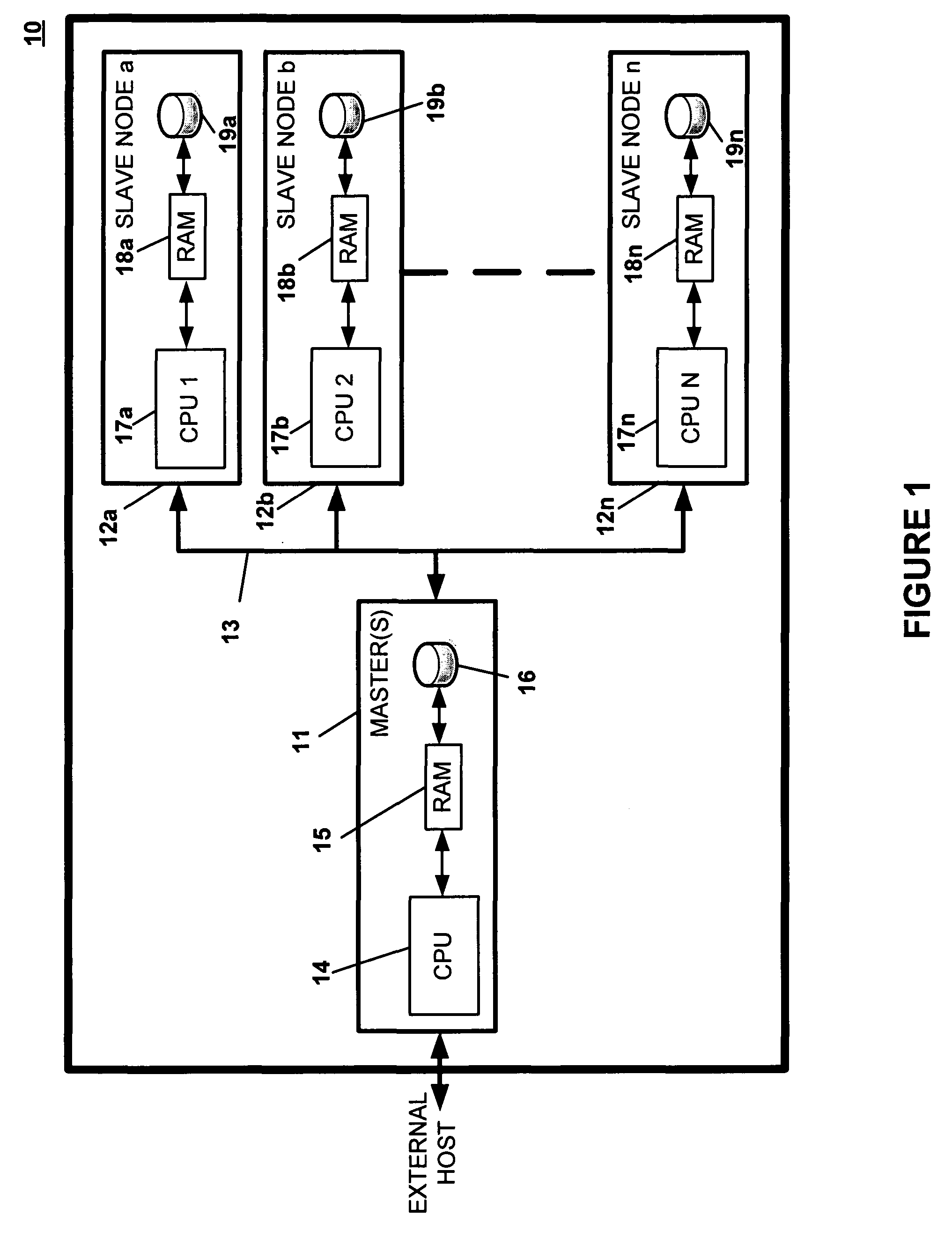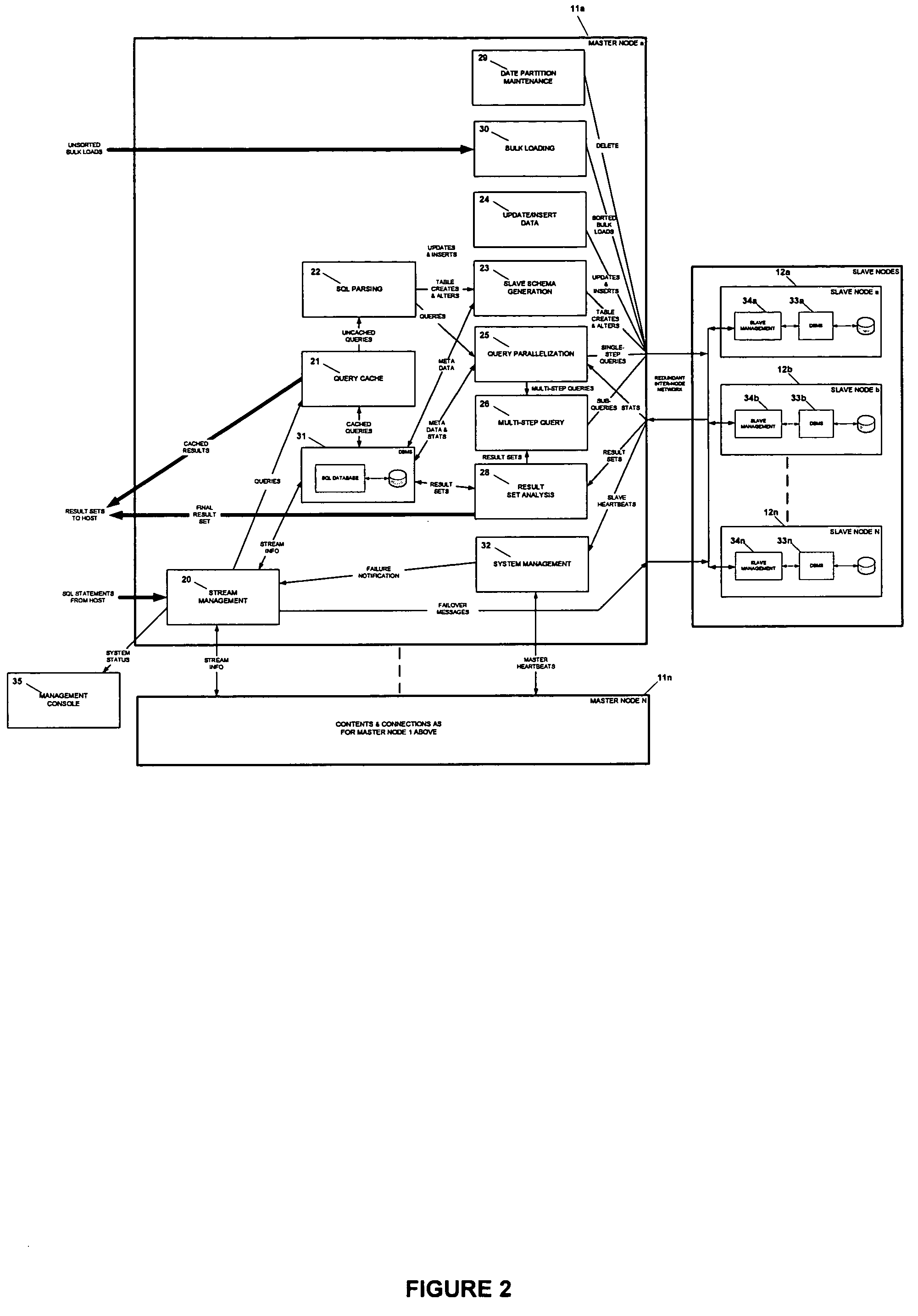Ultra-shared-nothing parallel database
a database and database technology, applied in the field of parallel database systems, can solve the problems of data slowing down query processing, query skew, and conventional design failure to provide linear scaling, and achieve the effects of reducing the processing of repetitive queries, cost-effective, and efficient and reliabl
- Summary
- Abstract
- Description
- Claims
- Application Information
AI Technical Summary
Benefits of technology
Problems solved by technology
Method used
Image
Examples
Embodiment Construction
[0034]The present invention is an improved shared-nothing parallel database system referred to as an ultra-shared-nothing parallel database system. The ultra-shared-nothing parallel database system is configured in a manner similar to conventional shared-nothing parallel database systems using at least one master node and multiple slave nodes. FIG. 1 is a schematic diagram depicting the hardware architecture of one embodiment of the ultra-shared-nothing parallel database system.
[0035]FIG. 1 depicts the configuration of database system 10, which includes master node 11 and slave nodes 12a to 12n. To simplify the diagram, FIG. 1 includes only one master node 11. However, as described in more detail below, other embodiments of the invention incorporate multiple master nodes 11 into database system 10. Master node 11 and slave nodes 12a to 12n are interconnected via network 13. Preferably, network 13 is a redundant network used to improve the reliability of database system 10. Alternati...
PUM
 Login to View More
Login to View More Abstract
Description
Claims
Application Information
 Login to View More
Login to View More - R&D
- Intellectual Property
- Life Sciences
- Materials
- Tech Scout
- Unparalleled Data Quality
- Higher Quality Content
- 60% Fewer Hallucinations
Browse by: Latest US Patents, China's latest patents, Technical Efficacy Thesaurus, Application Domain, Technology Topic, Popular Technical Reports.
© 2025 PatSnap. All rights reserved.Legal|Privacy policy|Modern Slavery Act Transparency Statement|Sitemap|About US| Contact US: help@patsnap.com



